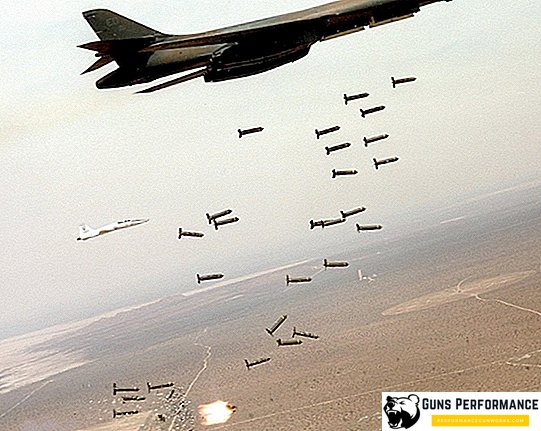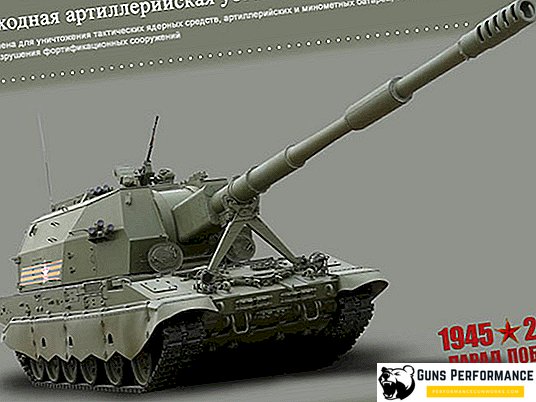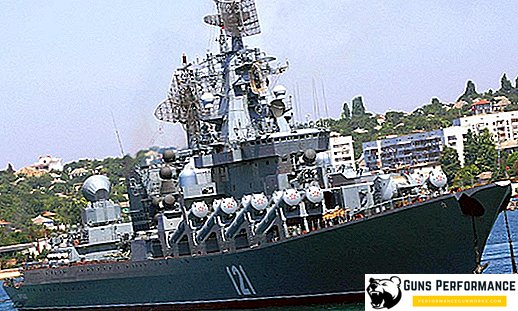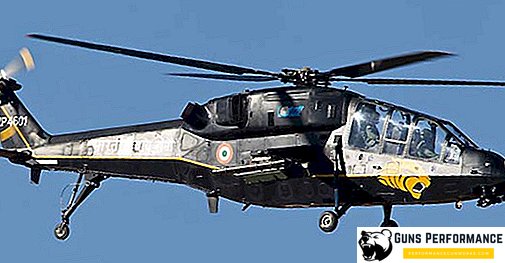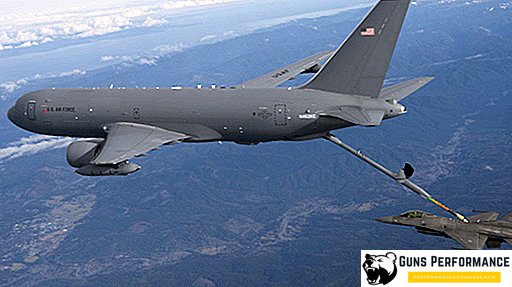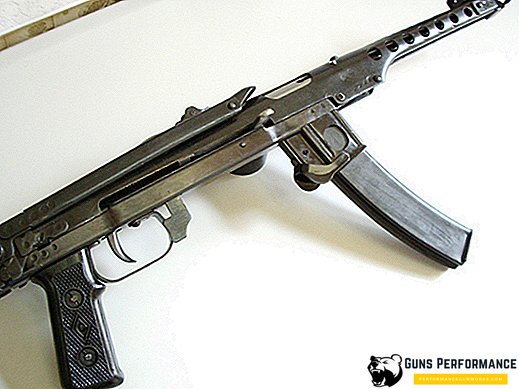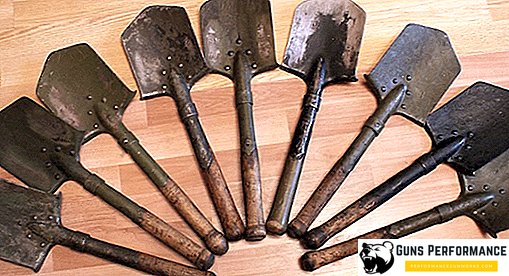
In the second half of the 19th century, infantry needed a special tool for the rapid construction of shelters. A large shovel, due to its size, was not suitable for these tasks, therefore the first army model of a sapper blade was gladly accepted by infantry.
The history of the sapper shovel
A small sapper shovel was invented back in 1869, when the Dane Linnemann (who was an infantry captain) received a patent for it. In Denmark, the novelty was taken rather coolly, which is why Linnemann opened production not in his homeland, but in Austria in 1871. One of the first large orders for his shoulder blade captain received from the Russian Tsarist Army, which ordered 60,000 shovels for 30,000 rubles. The novelty was appreciated by the Russian infantry.
Due to its compactness and ease of use, this type of shovel quickly got accustomed to the armies of the whole world.
Around these years, the first instructions appeared on the use of a small sapper shovel (MSL). These rules have been preserved to this day, only some features of the use of the MSL (MPL) as a weapon have been added to them. In modern manuals, a small universal soldier’s shovel is called both MSL and MPL (small infantry shovel). The appearance of the classic sapper blade has changed little over the years, only the materials, design and dimensions have changed.
Although the word “sapper” appears in the name of the shovel, it is used by all types of modern infantry, from simple motorized riflemen to elite special forces units (although for them there is a special-purpose engineer shovel of a folding structure). The main purpose of a sapper shovel is to dig up a trench or dig in, and often it has to be done under enemy fire. To create serious engineering structures, large sapper shovels (BSL) are used, in size and shape resembling ordinary bayonet shovels.
MSL device (MPL)

MSL (MPL) is still in service with the Russian army. Its design is known to anyone and consists of:
- Steel blade or bayonet;
- Wooden stalk.
Due to the fact that a small sapper (infantry) shovel sometimes has to be used as a weapon, forging its bayonet, forged steel with hardening is used. Wooden cuttings are usually made of hard wood and not painted. The end of the handle ends with a thickening in the form of a ball or "fungus", which protects the tool from slipping out of the hand. Stocks of shovels in military warehouses are coated with a special preservative grease to avoid rust (carbon steel of a shovel bayonet quickly rusts at high humidity).
For better retention of the cutting, it is sometimes cleaned with sandpaper and singed on the fire. There are folding models of shovels (for example, an engineer blade of the Bundeswehr), but they do not have the integrity of the design, which leads to a significant reduction in labor productivity.
Different models of sapper shovels have different forms of bayonets:
- Pentagonal (as MSL (MPL) 50);
- Quadrangular;
- Oval (quite rare).
MPL 50 has a bayonet width of 15 centimeters and a length of 18 cm, with a steel thickness of 3-4 millimeters. Two faces that are involved in digging should be sharply sharpened, and the severity depends on the types of digging soil. The side edges are often also sharpened, which helps with cutting the roots. There were blades, where one of the side faces was sharpened in the form of a saw, which turned out to be inconvenient and ineffective in practice.
If the MPL is supplied with a camouflage to prevent the loss of the scapula in battle, and all its facets are sharply sharpened - it means it is used primarily in melee combat. It is easy to throw such a shovel, and it will be no worse than a light hatchet.
To carry a small infantry shovel, a standard canvas cover is used, which can be mounted on the elements of a fighter's equipment. Sometimes the case is equipped with a special pocket, which houses the anti-splinter element used as armor.
Use of a shovel during the Second World War

During the Great Patriotic War, soldiers of the USSR were equipped with small sapper (infantry) shovels. A soldier trained in the possession of an MPL could dig in 10 minutes (to make a trench for prone shooting). The first trench fight showed all the advantages of an infantry shovel as a weapon. Soviet soldiers, accustomed to work a lot with shovels, cut down their enemies as axes.
Foldable engineer shovel, which was used by the Germans, could be fixed in different positions and was much more convenient for digging and transportation. But the fight with such a shovel was difficult, as pedantic Germans simply could not imagine how to use the entrenching tool to fight. All the more terrible to them seemed to be the Soviet fighters, who chopped down with a shovel to the right and left.

Despite outstanding fighting qualities, the main function of a small infantry shovel is digging trenches. It was often necessary to work with a shovel on the knees and under enemy fire, therefore a large shovel in such cases was inappropriate.
Household use
Nowadays, tourists and hunters have become the main users of MPL (except for the military). A sharpened shovel can perfectly cut branches, cut ice, with its help you can make pegs for a tent and cut the wire. Due to its compact size, it does not hinder movement and does not cling to the branches. In case of danger, a shovel can be used as a weapon.
Drivers in the USSR often carried MPL 50 in the trunk. In addition to using it, you can dig out a car that has fallen into the mud, a shovel was perfect for “calming down” hooligans. After a couple of energetic sweeps, a rare rowdy dared to continue his hooligan actions.
A few more unusual ways to use MPL:
- As a paddle for a boat or raft;
- You can use the spade bayonet as a support for the jack;
- The sharp shovel does an excellent job with chopping wood and chopping products;
- The shovel can be used as a frying pan.
It is better not to abuse the last point, because it is not hygienic and with intensive heating a bayonet of a shovel may lose its hardening.
Weapon or entrenching tools?

The first battle with a sapper shovel occurred at the beginning of the First World War. At that time, the first massive hand-to-hand fighting began in the trenches. In the trench crush, the soldiers successfully used sapper blades, chopping with them like axes. After several such fights, it was decided to include in the army training techniques of combat use of small sapper shovels.
Due to the excellent balancing, the domestic MPL 50 can also become a deadly throwing weapon. Even a blunt shoulder blade can inflict deep wounds, and if it is sharpened like a razor, it can completely cut through the leg and damage the bone. From the stories of the participants of the Second World War it is known that the Soviet soldiers often preferred small infantry shovels in the melee. Some even gave the handle a more convenient shape so that the shovel did not turn in his hand and always hit the enemy with a sharp edge.

The use of MPL for self defense
The use of an infantry shovel for self-defense is a remarkable topic. On the one hand, it does not fall under the definition of cold weapons; on the other hand, even a not very skilled swordsman is capable of inflicting injuries incompatible with life with such a tool.
The great advantage of the MPL is its length. 50 centimeters is enough to create around itself a "dead" zone, inaccessible to the enemy.
Selection of a small infantry shovel
Nowadays it is easy MPL 50 with military storage. The most common examples of the second half of the 80s. Sometimes there are infantry shovels of 40-50 years, characterized by better quality steel bayonet. Unfortunately, these models become less and less every year, so having met them on sale, do not hesitate and buy several pieces at once - the benefit is their cost is relatively small. Such models can be distinguished by the factory stamp on which the year of manufacture is indicated.
After more than a hundred years of combat service, the small infantry shovel is still in service. It is not by chance that the Russian special forces are paying so much attention to working out the combat technique with a small infantry shovel.


